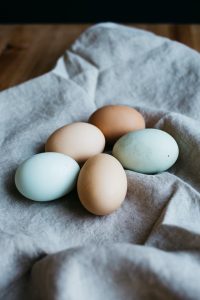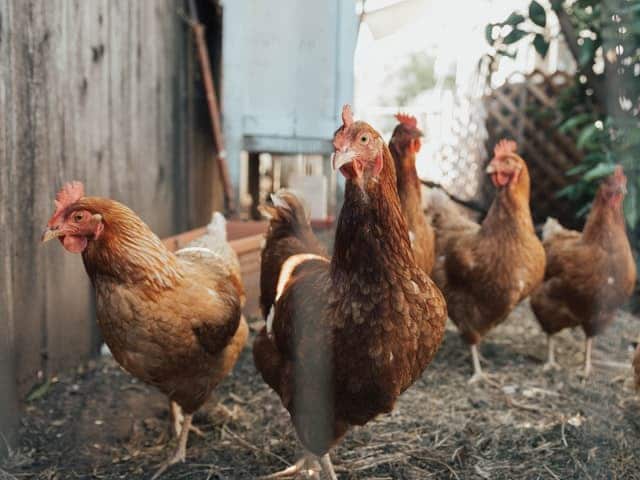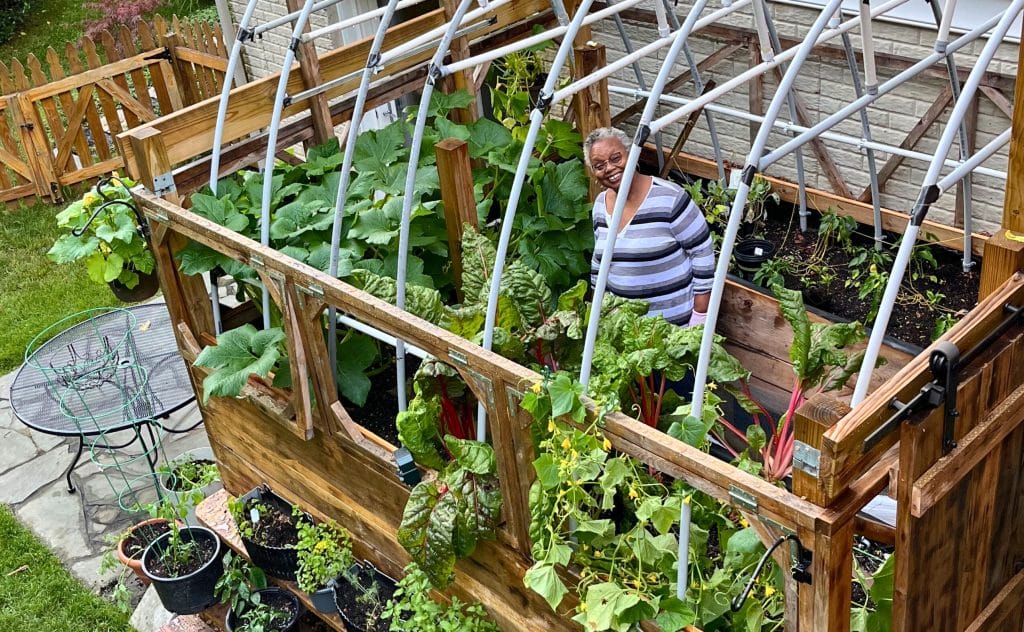Guest Post written by Chris Lesley of chickensandmore.com
While keeping backyard chickens has been steadily increasing in popularity for more than 10 years, the coronavirus lockdown has spurred this gradual rise into a full-fledged flood of urban and suburban would-be farmers. Tragically, the lockdown and accompanying recession have also led to a massive increase in food insecurity, increasing the strain on food pantries, soup kitchens, and other resources for the hungry almost past the breaking point. However, while these two trends might seem to be in opposition to one another, one can actually help alleviate the other. As chicken keeping becomes more and more common, especially in urban areas with large populations of the homeless and the hungry, that means more and more families with extra fresh eggs to donate to food pantries (yes… you can use AmpleHarvest.org for this too, but since not all pantries will accept eggs, call ahead). In addition to being fun, trendy (AmpleHarvest.org’s founder and a past staffer raised chickens), and good for the chicken keeper, a backyard flock can also be a way to do a good deed.
Breed Selection
Like dogs, chickens come in many different breeds of all colors, sizes, and purposes, and not every breed will work for every family or every farm. Choosing a breed, then, is one of the most important decisions new chicken owners will make – layers versus broilers, bantam versus standard, small or large eggs? While more experienced owners can make use of this extensive guide to choosing the right chickens, newbies should really only be worried about choosing between a few hardy, low-maintenance breeds that will give them some wiggle room in establishing their perfect chicken care setup and routine.
A lot of heritage breeds are actually perfect for starter flocks, because they were bred to be reliable producers for busy smallholders without fancy equipment. Plymouth Rocks, Leghorns, Dominkers, and the famous Rhode Island Red are all great starter breeds, because of their relatively laidback personalities; sturdy constitutions, regardless of climate; and regular egg production. These are breeds that will thrive with a minimal setup and no-frills diet, while still laying at least three or four eggs a week.
Basic Setup

As for what that minimal setup should look like, most people are familiar with the chicken coop from childhood depictions of idyllic farms, and in a lot of ways that image hasn’t changed. Chicken coops can absolutely still look like tiny wooden houses, though there are now a great many more options as well, from movable models not unlike the barracks in Chicken Run to readymade plastic coops. Deciding which coop will ultimately be right for which flock depends a lot on the available space, the climate, and owner preference on things like hardiness, aesthetic, and level of assembly required.
The important things to keep in mind when choosing a chicken coop are space – each hen should have at least four square feet of space, 10 if they aren’t allowed outside for exercise – furniture, and cleaning. Chickens poop a lot – a lot – and any coop should be able to withstand both this fecal onslaught and repeated and regular cleanings; many owners prefer coops with removable components for exactly this reason. Note… consider using the poop as fertilizer in your garden after its time to “burn off” the excess nitrogen. As for furniture, adult layers need two main features: perches and nesting boxes. Hens will almost always choose to sleep on the highest available surface, so it’s imperative to mount your perches higher than your nesting boxes – birds sleeping in nesting boxes is a recipe for the mother of all messes.
Feed and Basic Care
The good news about chicken feed is that, despite the many fancy variations available, in all likelihood your backyard flock just needs a standard layer feed and two supplements – calcium carbonate and grit. Calcium carbonate, usually administered through ground-up oyster shells, replaces the nutrients chickens use up in laying eggs, and grit basically serves as a chicken’s teeth, helping them grind up and properly digest their food. Both should be available, relatively cheaply, through a local feed or hardware store, and left out separate from the feed for the chickens to partake of as needed. Remember that chickens are natural foragers and prefer to graze throughout the day, rather than eating restricted meals – they should have feed available to them all day.
Egg Safety and Donations

Despite all the benefits, raising any animal is not without risk, especially when it comes to consuming their eggs or other food products. Chickens are, unfortunately, carriers for salmonella, which they can transfer to humans both through their eggs and through direct contact. The best and easiest ways to minimize risk are to carefully inspect and clean eggs before using them and to wash hands thoroughly before and after interacting with or touching the birds. Bear in mind, especially for chicken keepers with children, that large amounts of petting, cuddling, and kissing can be one of the highest risk factors for salmonella.
Because of the additional risk of salmonella from non-pasteurized eggs, not all food banks will be willing to accept eggs from a backyard flock. Chicken owners should contact their local food pantry or donation center to make sure the eggs meet their qualifications. Even if your local food bank doesn’t accept home-raised eggs, they might be able to connect you with a group that does; homeless and women’s shelters and other services that provide hot meals might be an option, or even direct-to-family donations, if you can find a reliable way to be connected to a family in need.
However a new chicken keeper decides to use their eggs, whether that’s giving them to a friendly neighbor, donating them to a food pantry, or drinking them all like Rocky Balboa, keeping a chicken flock is an exciting activity full of joys and sorrows, that helps practitioners eat local, connect to nature, and improve their diets. And there’s a lot to be said for a hobby that’s good for the environment, good for the soul, and can be turned into something good for the community, especially in a world that feels like it needs good deeds now more than ever.



